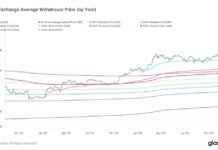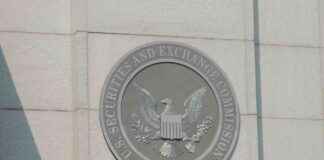The U.S. has a pretty big opportunity with this whole blockchain-based dollar thing, according to John deVadoss. He seems to think that if the U.S. plays its cards right, it could be a game-changer. The history of the dollar can be broken down into three acts. Act I was all about the Eurodollar, those sneaky off-shore bank deposits that popped up in London in the 1950s. They let people hold onto dollars without all that pesky U.S. regulation. Act II brought us the Petrodollar, which kicked off in 1974 when OPEC decided to price crude oil in dollars. This move basically tied global energy demand to the U.S. currency and gave Washington a leg up in the Treasury bill game.
Now, Act III is underway. Enter the Stabledollars, also known as stablecoins. These on-chain tokens are fully backed by Treasury bills and cash, and they’ve been making waves with over $230 billion in circulating supply. On any given day, they’re settling more value than PayPal and Western Union combined. The dollar has basically reinvented itself once again, this time as a super fast, super cheap way to move money around.
The possibilities with stablecoins are pretty exciting. A merchant in Lagos can accept USDC on her phone, avoid losing 20% of her money to naira slippage, and restock her inventory all in the same day. A hedge fund in Singapore can stash cash in tokenized T-bill vaults, make some decent returns, and even get in on a swap bright and early in New York. Even a gig worker in Colombia can turn their weekend earnings into digital dollars, bypassing those pesky capital controls and avoiding hefty remittance fees.
Stablecoins aren’t here to replace the banking system; they’re just finding clever ways to work around its slow, expensive parts. And as they grow in popularity, they’re gaining more legitimacy. The GENIUS Act, currently making its way through the Senate, could give stable-coin issuers a national charter and even open up the possibility of Fed master accounts. The Treasury is already crunching numbers, predicting a $2 trillion stable-coin market by 2028. That’s no small change.
Tether and Circle are leading the pack, holding over 90% of the market share. And get this, their reserves are mostly in short-term U.S. debt. So basically, foreigners are holding digital T-bills that settle in just 30 seconds. The dollar’s network effect is moving from old-school SWIFT messages to smart contracts, extending its reach without needing to print more cash.
But, as with any big leap forward, there are risks. These private tokens that wrap up sovereign money raise some tough questions. Who’s in charge of monetary policy when a third of the offshore money is living in smart contracts? What happens if an issuer decides to blacklist someone’s wallet? And will other countries be cool with relying so heavily on a U.S.-regulated asset?
It’s a bit of a puzzle, but one that can be solved with some smart governance. Setting up rules similar to Basel-style capital and liquidity requirements for issuers could be a good start. Making sure reserve attestations are posted in real-time on-chain would keep things transparent. And hey, why not make sure these tokens can work together across different blockchains to avoid one big custodian taking over everything?
If the U.S. plays its cards right, it could have a digital-dollar fortress that outshines any other country’s central bank digital currency, even China’s. But if they drop the ball, all that money could end up offshore, leaving the U.S. scrambling to keep up with a system it doesn’t control.
The dollar has always been good at hitching a ride on the latest trade trend. Eurodollars got us through post-war rebuilding, petrodollars fueled the fossil fuel era, and now Stabledollars are setting the stage for a faster, more digital economy. In ten years, we might not even notice them—they’ll just be part of everyday life. Your local coffee shop might quote prices in pesos or pounds, but behind the scenes, it’s all settling in tokenized dollars. And don’t be surprised if your paycheck shows up in a wallet that automatically sorts out your savings, investments, and charitable donations the moment it hits your account.
The big question now is whether the U.S. can handle the digital dollar revolution it helped kick off. Stablecoins are quickly becoming a major player in the financial world. If the U.S. can put some solid rules in place, this could be the dollar’s next big chapter. But if they drop the ball, well, someone else will just swoop in and take the wheel. It’s a fast-moving world out there, and the U.S. needs to keep up.


















